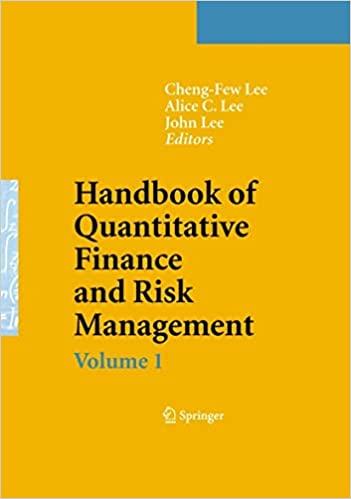Question
Watertown, Inc. was founded in May, 2000 by Lawrence Rollins, who was employed for the last 20 years as a river rafting guide. Mr. Rollins
Watertown, Inc. was founded in May, 2000 by Lawrence Rollins, who was employed for the last 20 years as a river rafting guide. Mr. Rollins received an unexpected inheritance of $2,000,000 in January, 2000. Soon after, he decided to leave his lifelong career in river rafting and use his inheritance as seed capital for Watertown. During the first few years of its existence, Watertown experienced steady sales growth, although the company has only recently shown positive net income.
It is March, 2016 and the company is considering two alternative processes for manufacturing inflatable tubes to service demand in a rapidly growing market. Management intends to make the initial investment in the project at the end of April, 2016 and expects any cash flows associated with the project to arrive yearly, beginning at the end of April, 2017.
The first manufacturing process has a higher start-up cost than the second, but greater economies of scale. The expected cash flows associated with this process are presented below in Table 1.
Table 1:
Cash Flow Projections for Process 1
|
| 0 | 1 | 2 | 3 | 4 | 5 |
| EBIAT* |
| 150,000 | 200,000 | 300,000 | 470,000 | 500,000 |
| Depreciation |
| 200,000 | 200,000 | 200,000 | 200,000 | 200,000 |
| Initial Investment | (1,000,000) |
|
|
|
|
|
The second manufacturing process requires a smaller initial investment than the first, and because of this it is appealing to some members of the board. The expected cash flows associated with this process are presented in Table 2 below.
Table 2:
Cash Flow Projections for Process 2
|
| 0 | 1 | 2 | 3 | 4 | 5 |
| EBIAT* |
| 440,000 | 240,000 | 175,000 | 40,000 | 40,000 |
| Depreciation |
| 160,000 | 160,000 | 160,000 | 160,000 | 160,000 |
| Initial Investment | (800,000) |
|
|
|
|
|
*EBIAT is Earnings Before Interest and After Tax (i.e., EBIT x (1-tax rate))
After careful assessment of the risk associated with this project, you conclude that the appropriate cost of capital for both processes is 9.75%.
At the initial presentation, project leaders of both teams presented their cash flow projections. However, since the processes are mutually exclusive, the firm can only accept one proposal.
You have been asked to evaluate the two production processes and present your findings to the board of directors.
Explain the meaning of the incremental IRR. Based on the incremental IRR, which process should you choose? Should the board use incremental IRR as a decision rule? Explain why or why not.
Plot the NPV profiles for the two projects and present the graph as an exhibit. Explain the relevance of the crossover point. How would you convince the board that the NPV method is best?
Step by Step Solution
There are 3 Steps involved in it
Step: 1

Get Instant Access to Expert-Tailored Solutions
See step-by-step solutions with expert insights and AI powered tools for academic success
Step: 2

Step: 3

Ace Your Homework with AI
Get the answers you need in no time with our AI-driven, step-by-step assistance
Get Started


